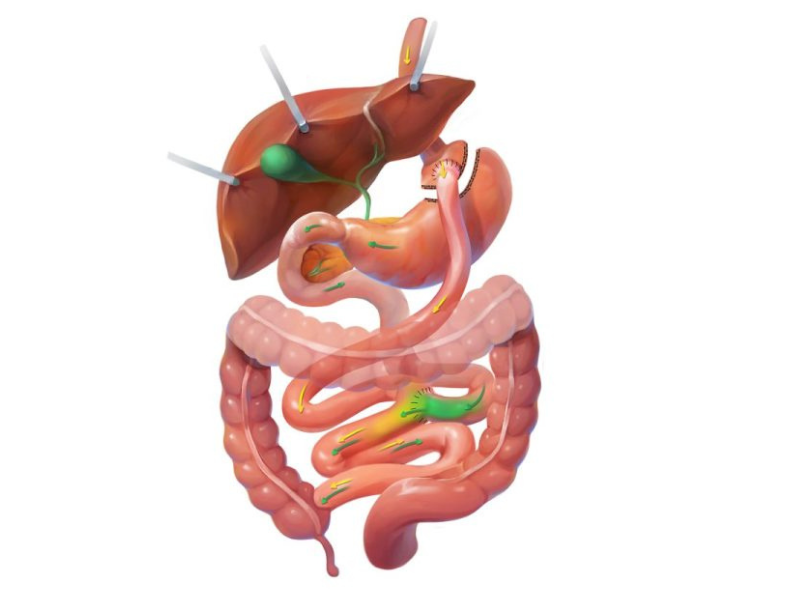The gastric bypass is a combination of restriction and malabsorption. The amount of food a patient consumes is restricted by the reduced size of the stomach and the absorption of calories is lessened by bypassing part of the intestinal tract. The first phase of surgery involves cutting away approximately 85% of the existing stomach. The remaining usable stomach pouch is about the size of a golf ball. The larger part of the stomach remains in the abdomen, receiving no food, but contributing digestive juices further down digestive tract.
The second part of the procedure bypasses a portion of the small intestine, reducing the amount of intestinal surface area exposed to food and limiting caloric absorption.
As with most bariatric surgery procedures today including the gastric sleeve or sleeve gastrectomy, the gastric bypass is performed in a minimally invasive manner using four or five small incisions in the abdomen versus traditional open surgery that employs a large single incision. The procedure can also be performed with the assistance of our surgical robot. Procedures are typically performed in a hospital setting and require an overnight stay.


